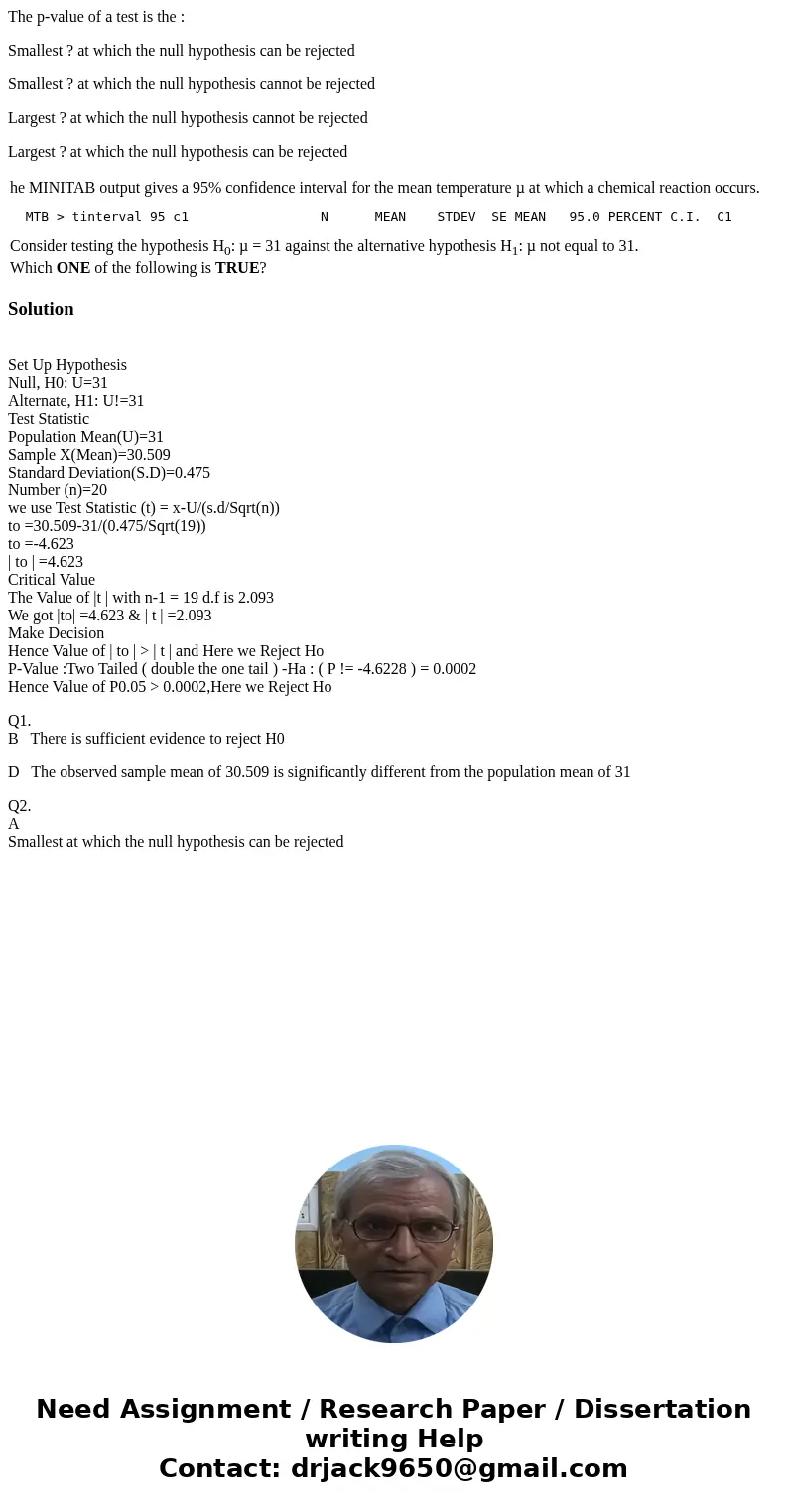The pvalue of a test is the Smallest at which the null hyp
The p-value of a test is the :
Smallest ? at which the null hypothesis can be rejected
Smallest ? at which the null hypothesis cannot be rejected
Largest ? at which the null hypothesis cannot be rejected
Largest ? at which the null hypothesis can be rejected
he MINITAB output gives a 95% confidence interval for the mean temperature µ at which a chemical reaction occurs. MTB > tinterval 95 c1 N MEAN STDEV SE MEAN 95.0 PERCENT C.I. C1 20 30.509 2.126 0.475 ( 29.514, 31.505)Consider testing the hypothesis H0: µ = 31 against the alternative hypothesis H1: µ not equal to 31. Which ONE of the following is TRUE? |
Solution
Set Up Hypothesis
Null, H0: U=31
Alternate, H1: U!=31
Test Statistic
Population Mean(U)=31
Sample X(Mean)=30.509
Standard Deviation(S.D)=0.475
Number (n)=20
we use Test Statistic (t) = x-U/(s.d/Sqrt(n))
to =30.509-31/(0.475/Sqrt(19))
to =-4.623
| to | =4.623
Critical Value
The Value of |t | with n-1 = 19 d.f is 2.093
We got |to| =4.623 & | t | =2.093
Make Decision
Hence Value of | to | > | t | and Here we Reject Ho
P-Value :Two Tailed ( double the one tail ) -Ha : ( P != -4.6228 ) = 0.0002
Hence Value of P0.05 > 0.0002,Here we Reject Ho
Q1.
B There is sufficient evidence to reject H0
D The observed sample mean of 30.509 is significantly different from the population mean of 31
Q2.
A
Smallest at which the null hypothesis can be rejected

 Homework Sourse
Homework Sourse